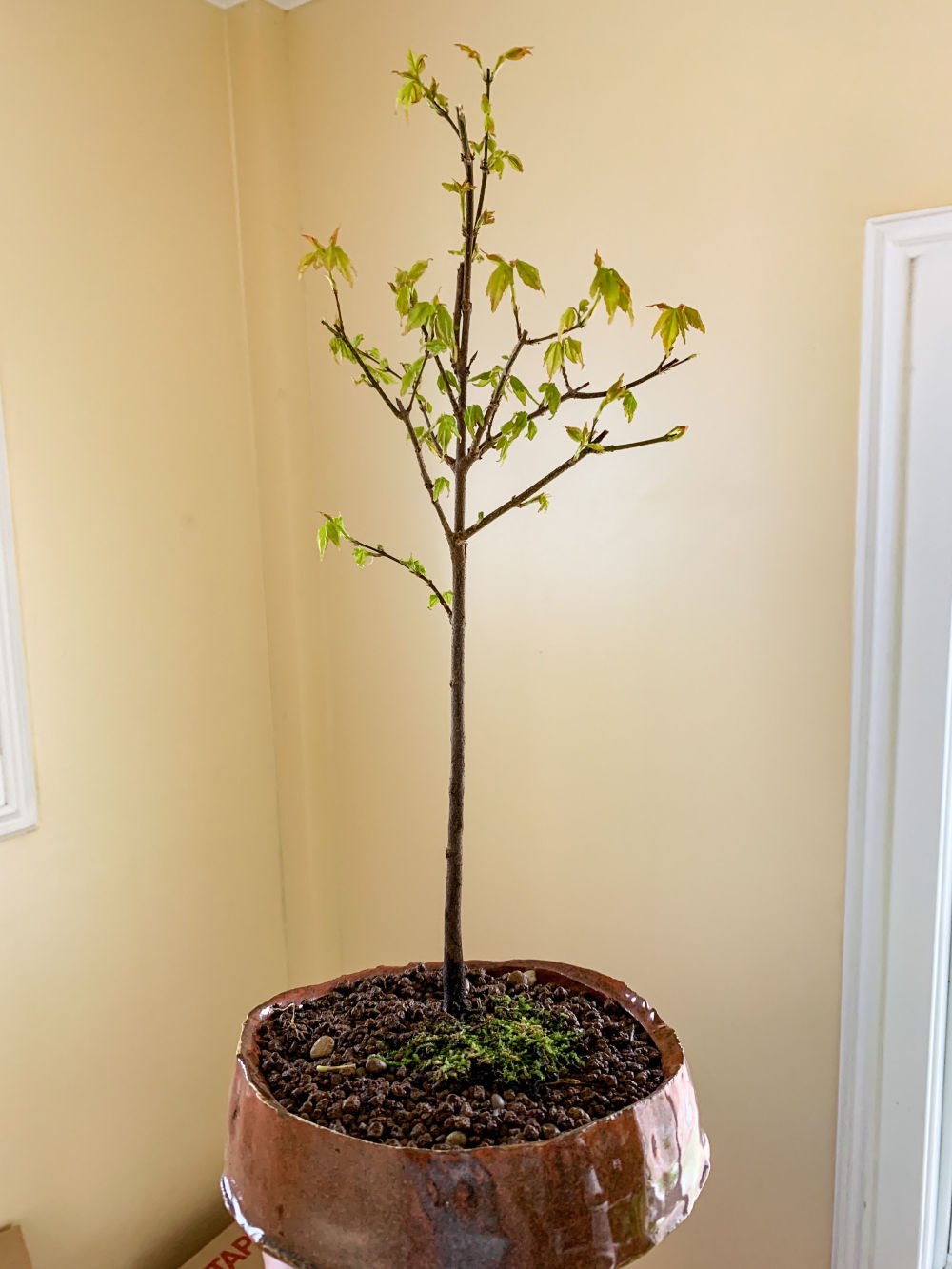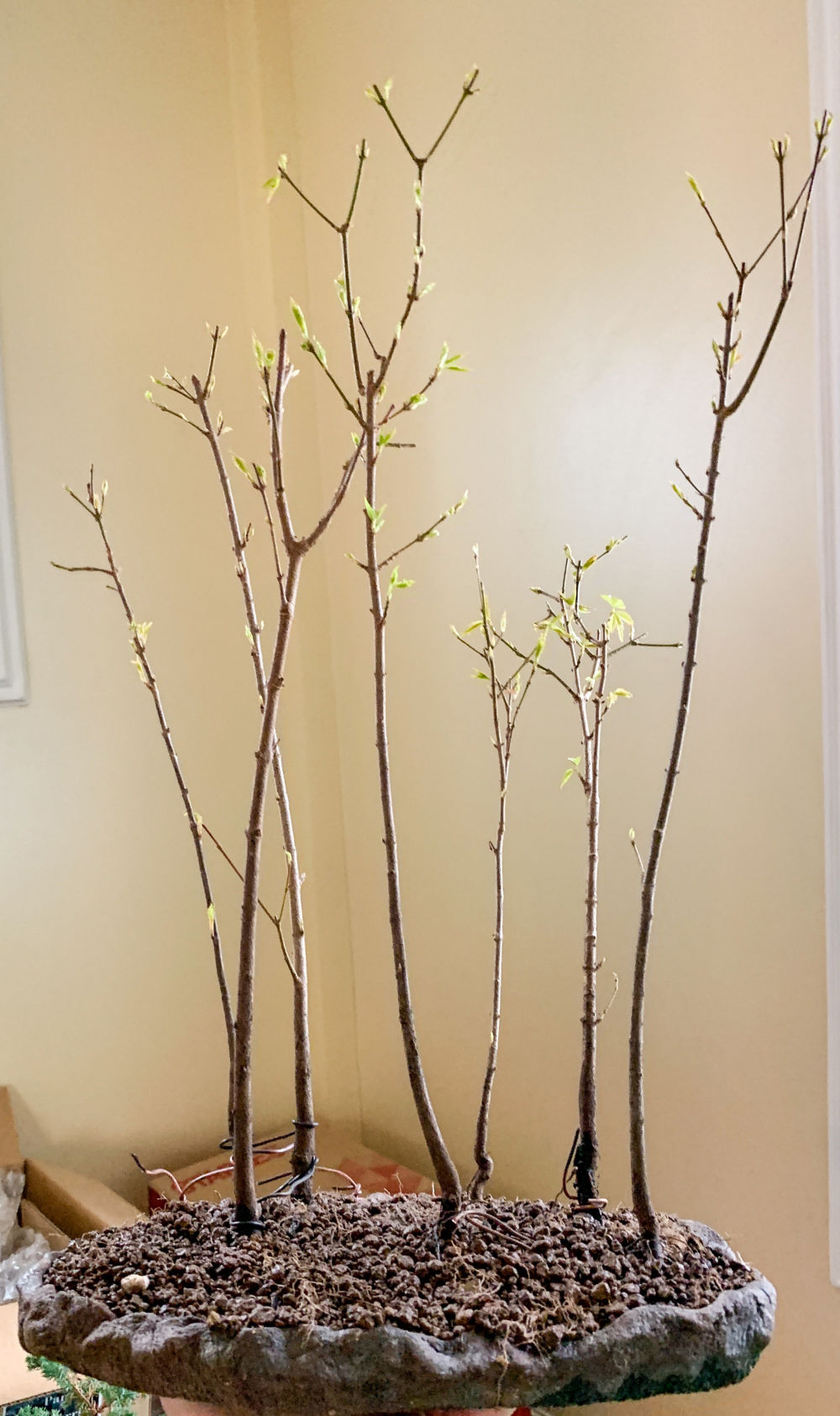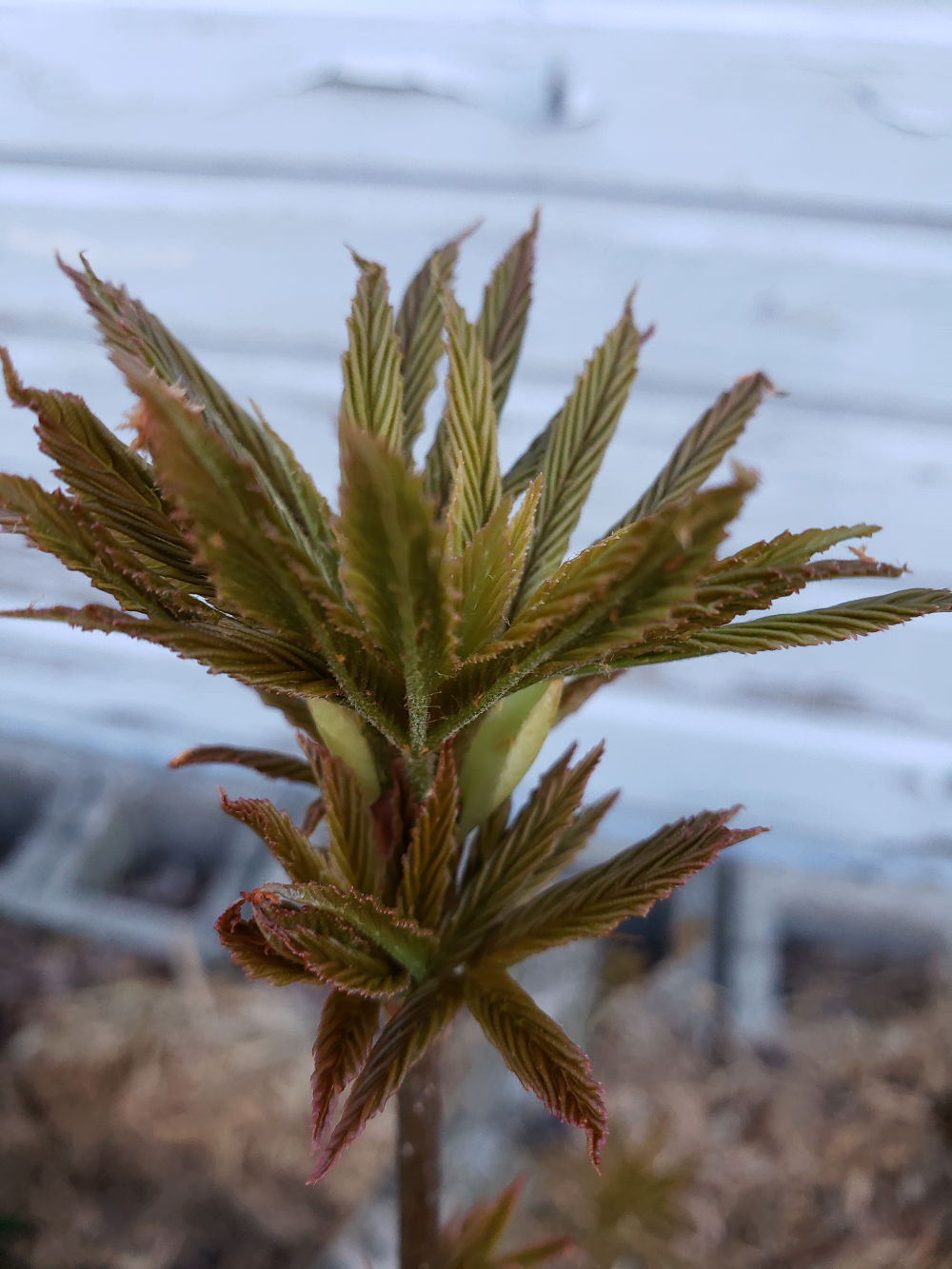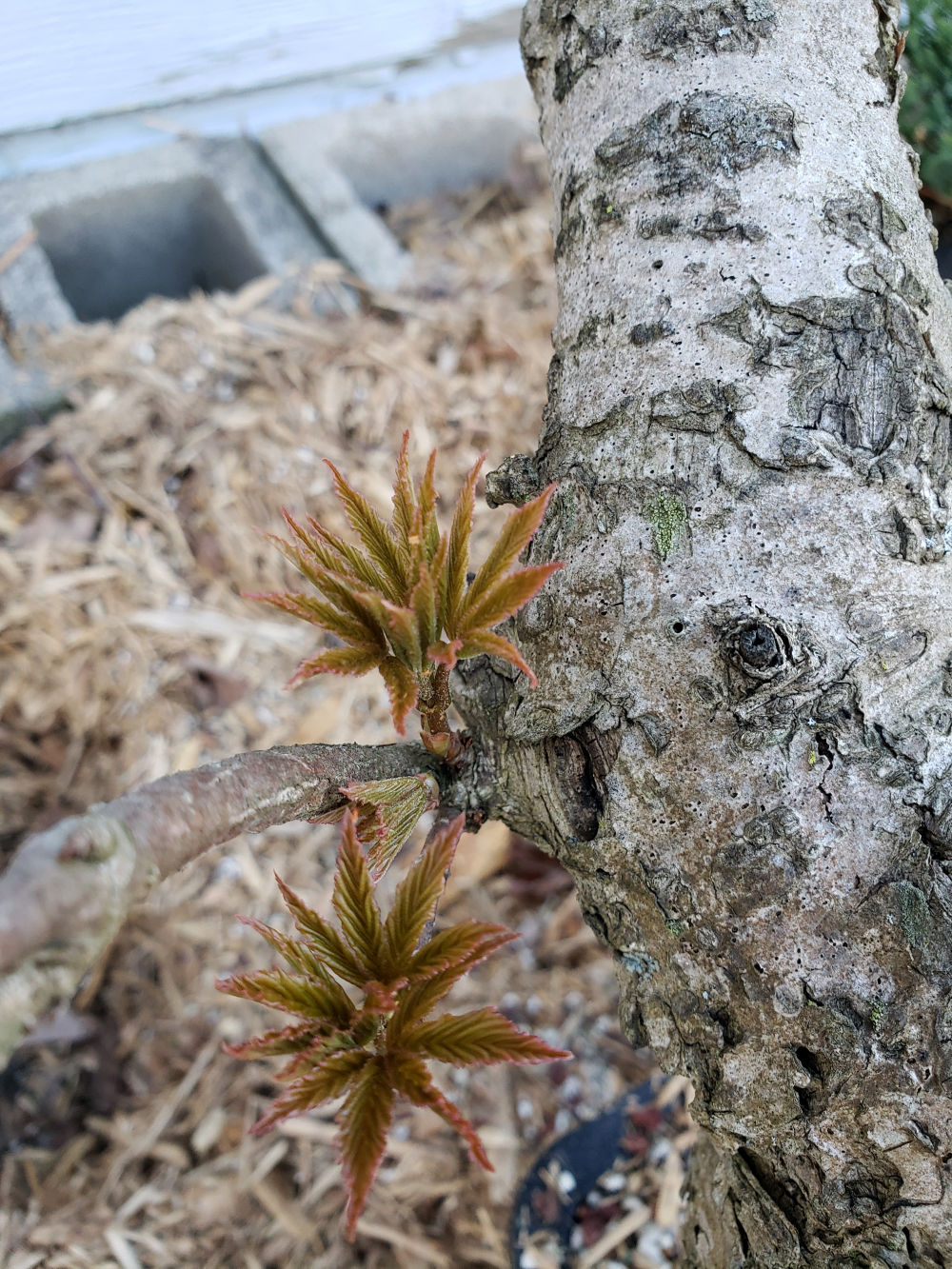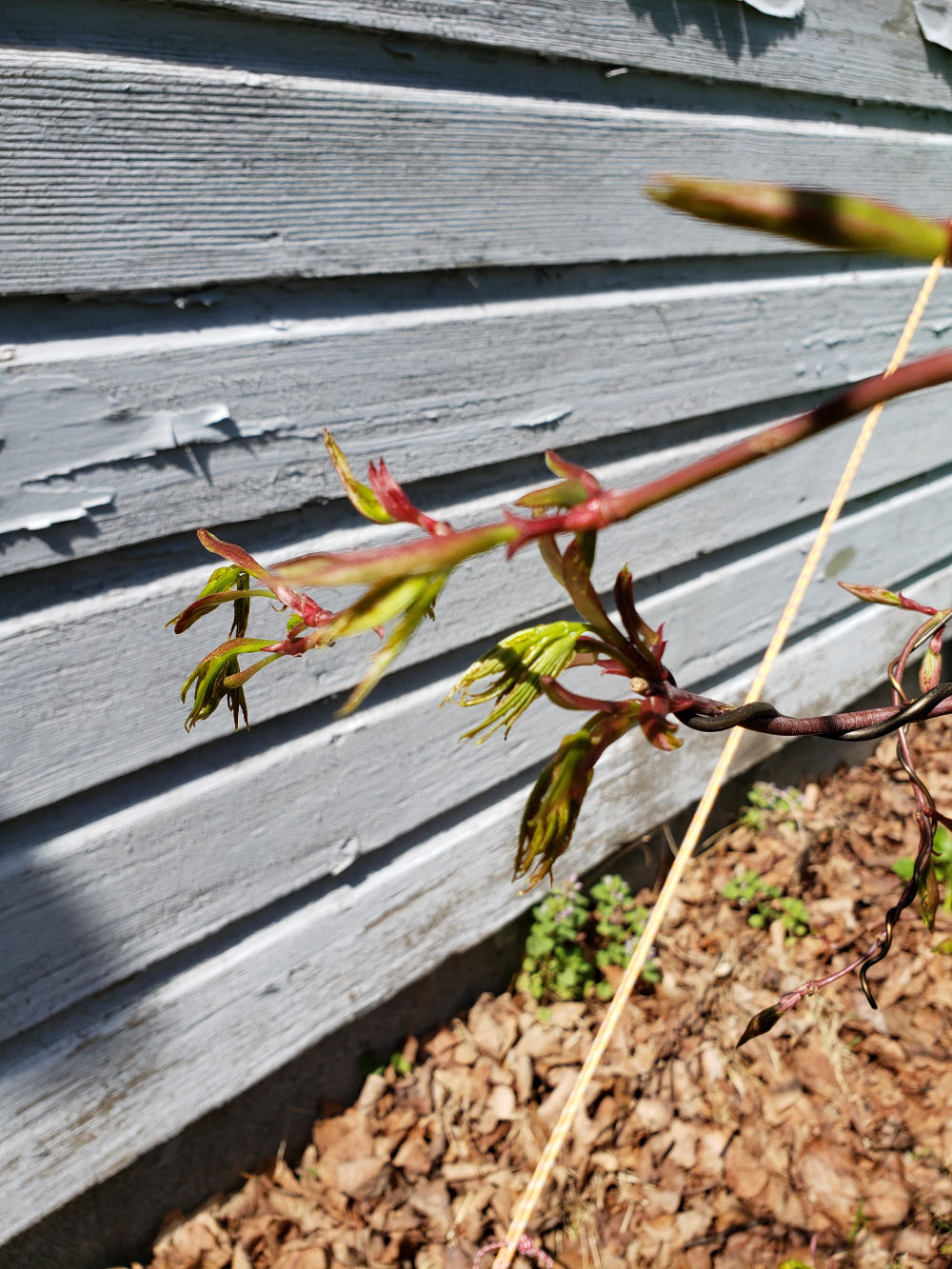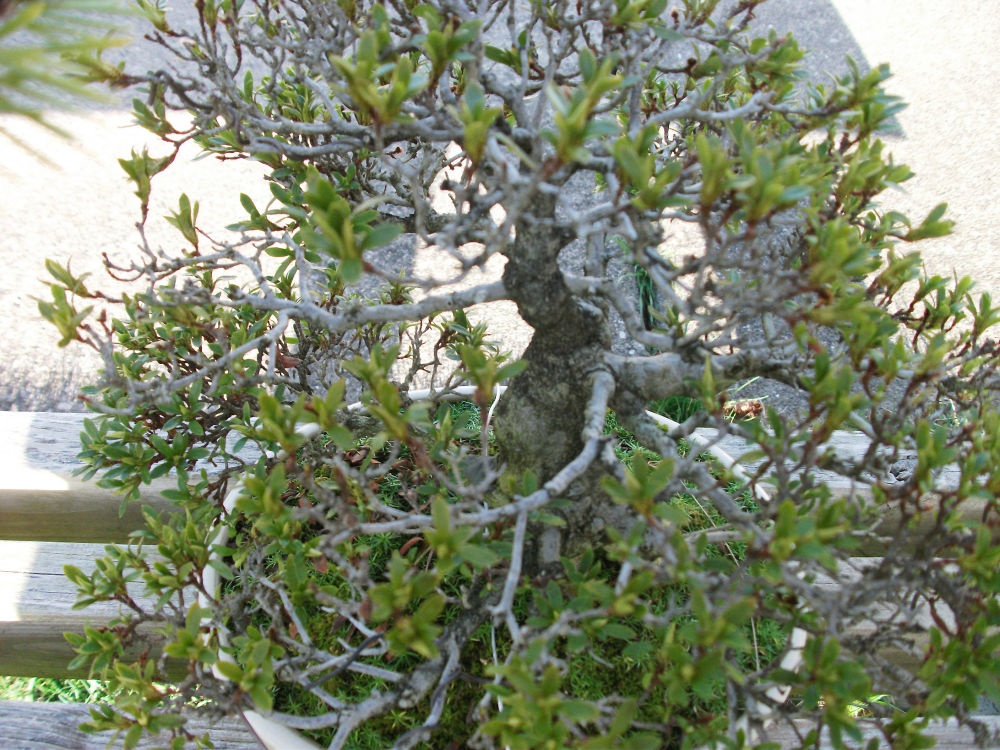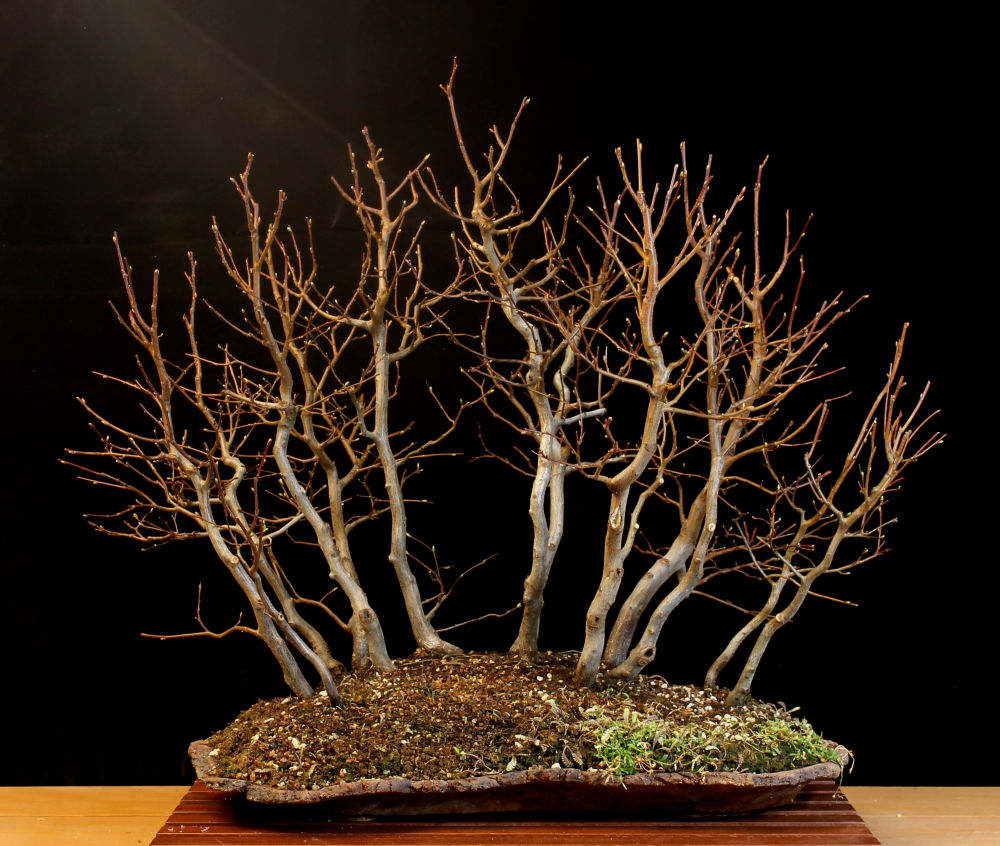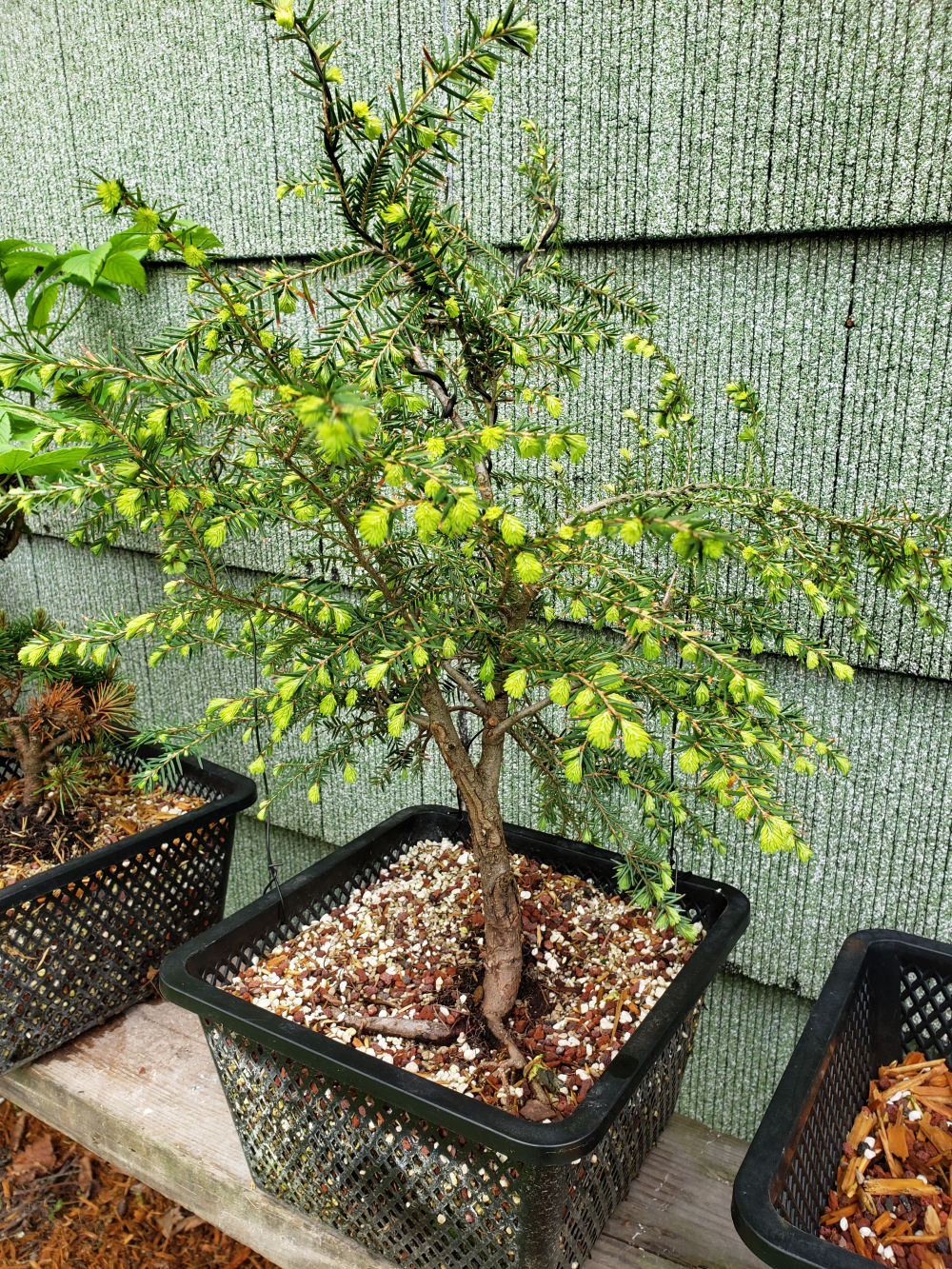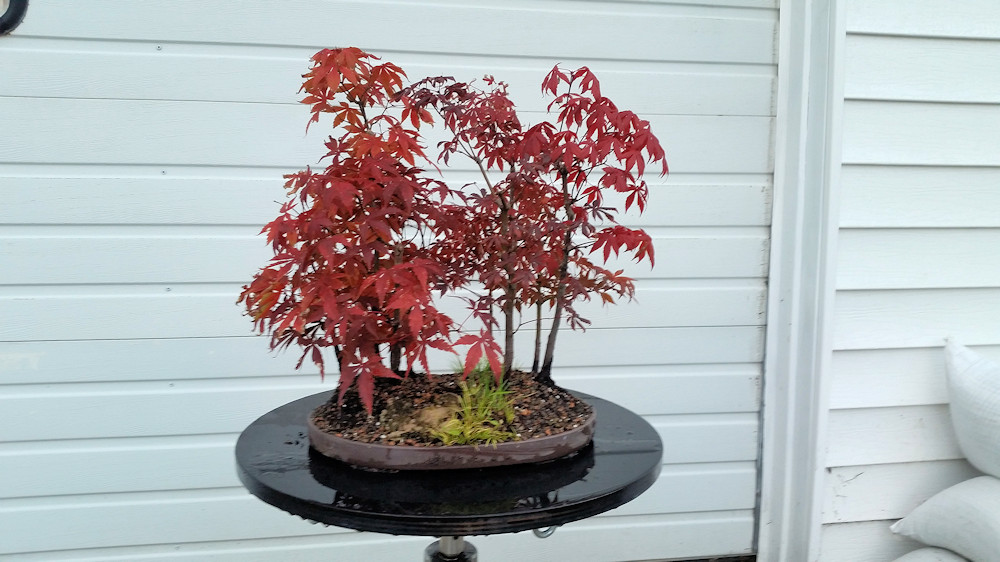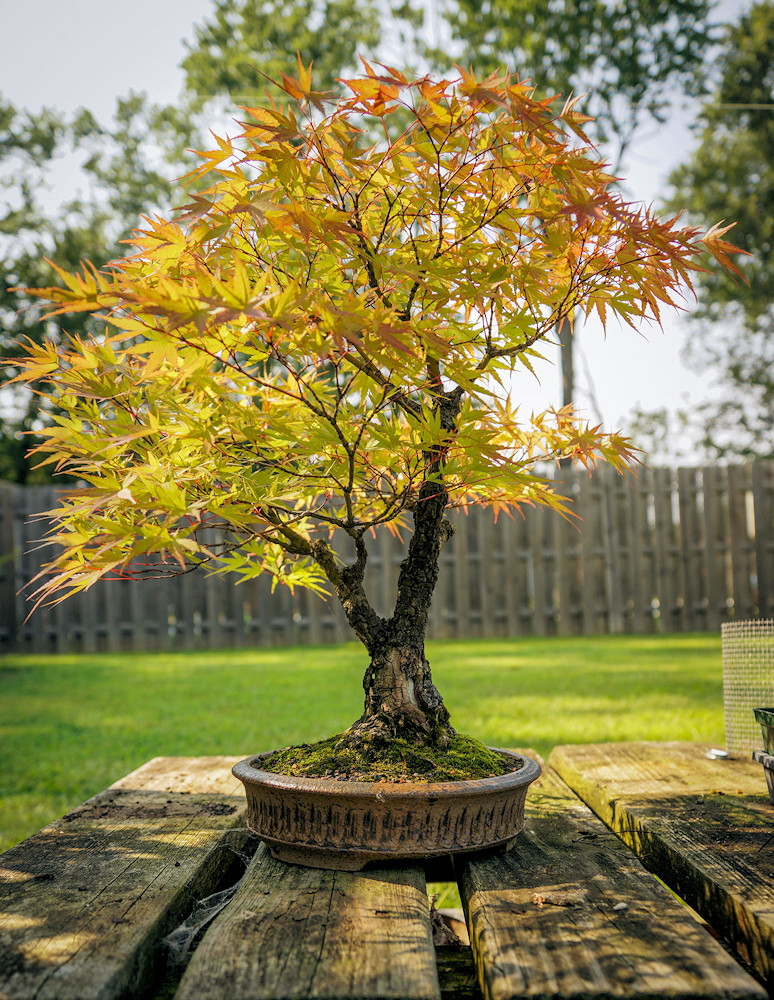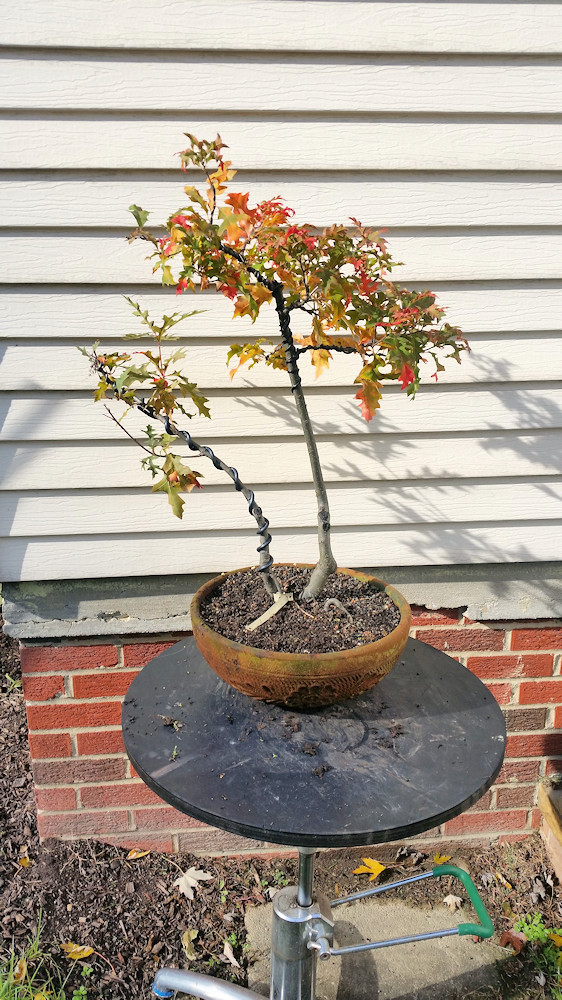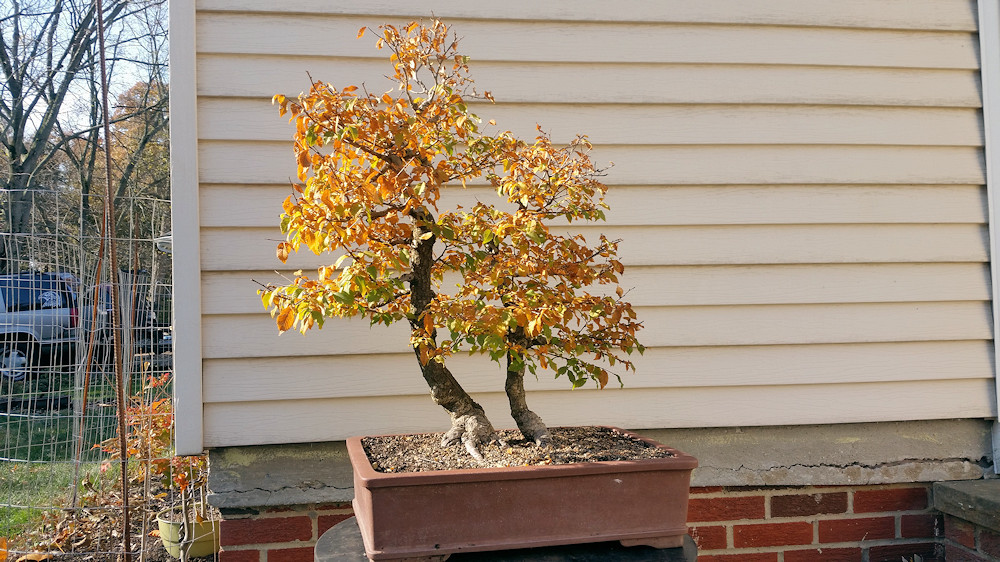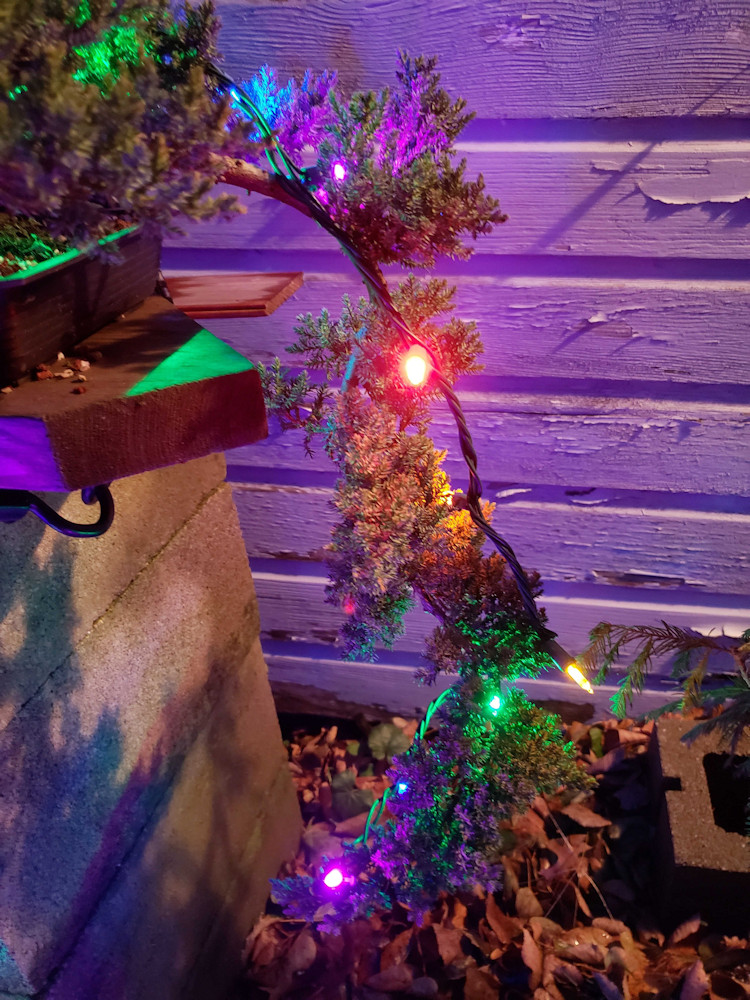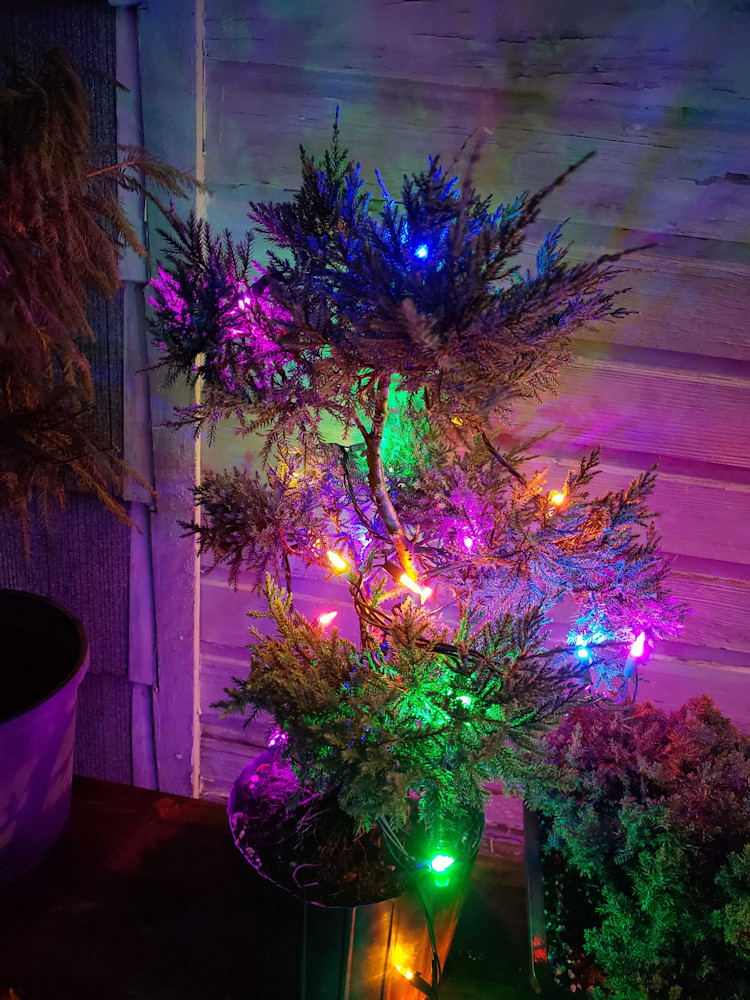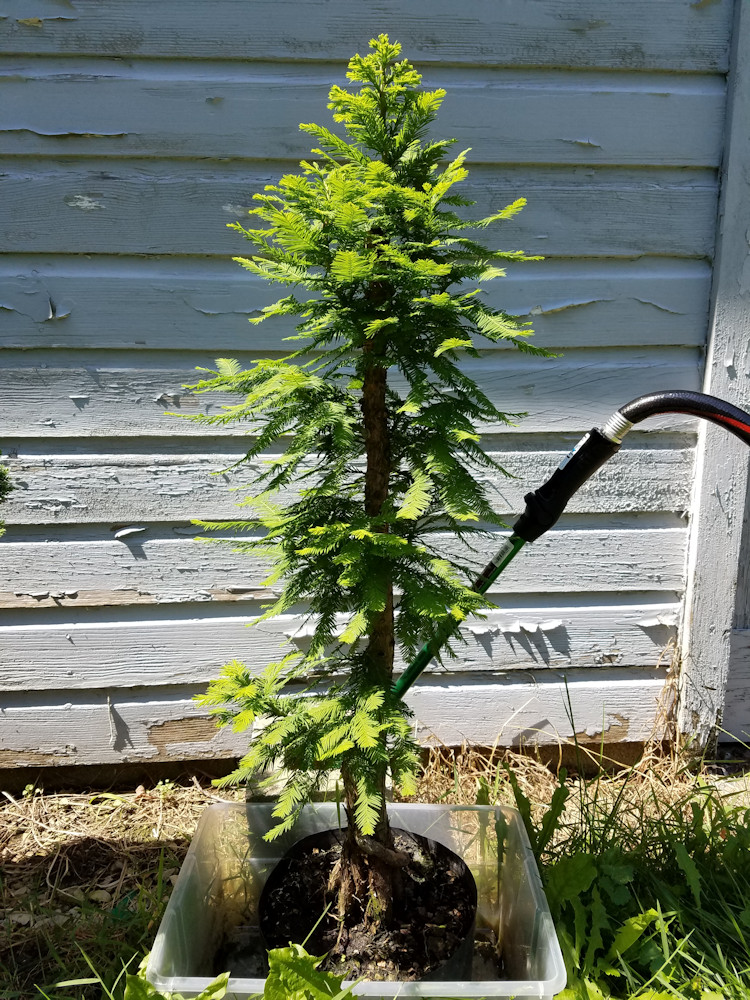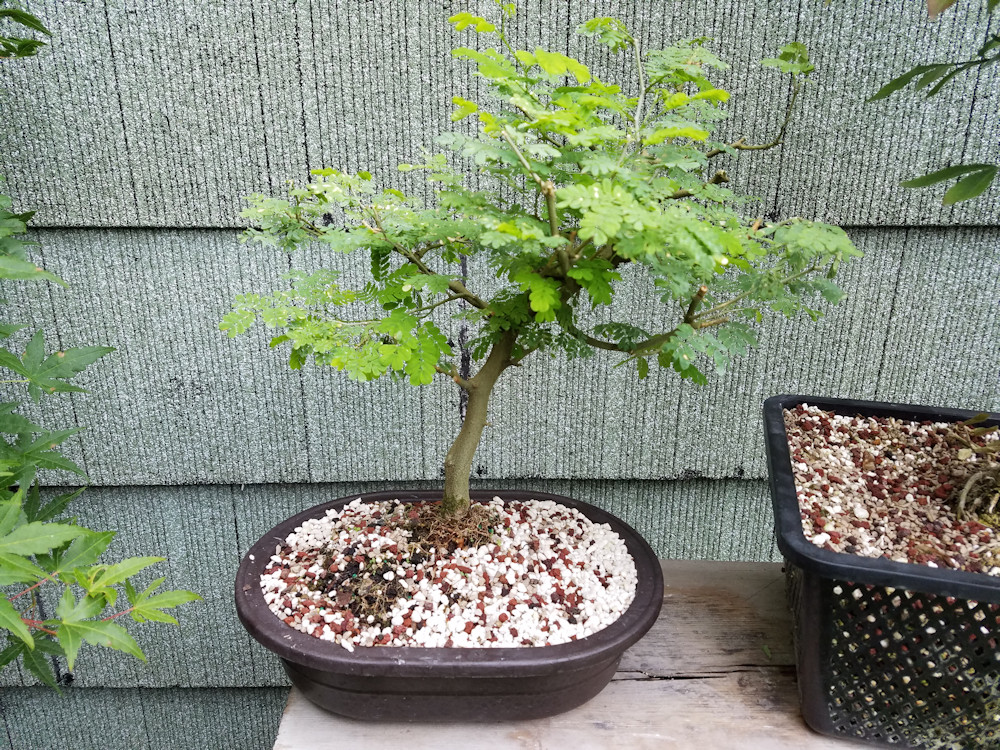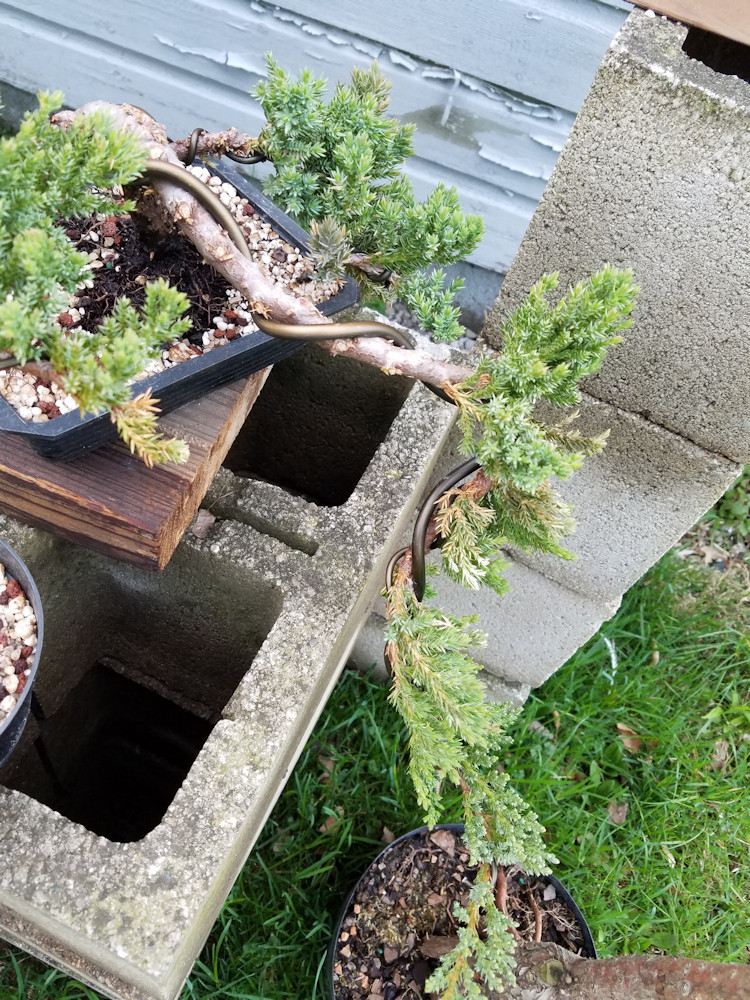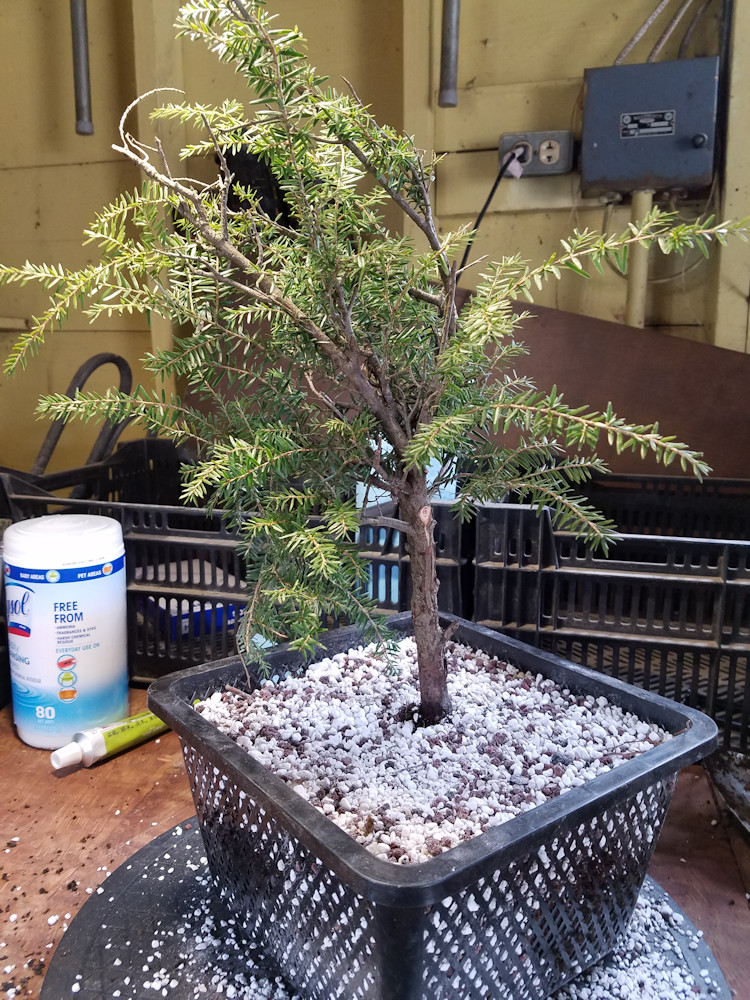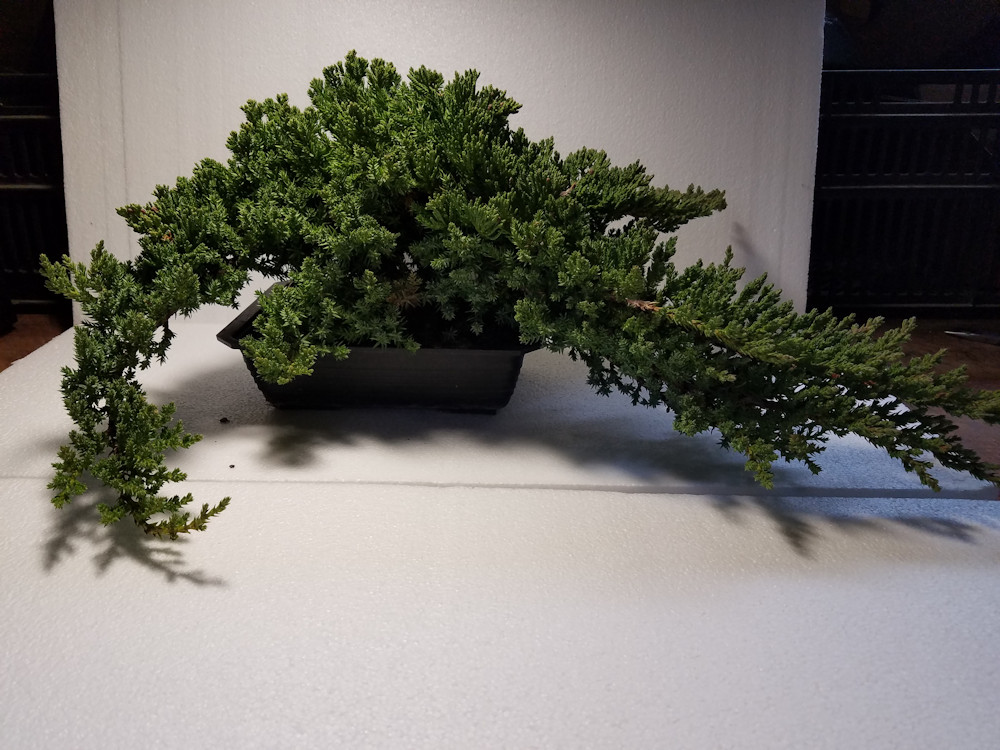Category: Bonsai
Winter Silhouettes
Newcomers to bonsai are often surprised to learn that most bonsai are outdoor plants. Usually it isn’t long before the question comes up: what do you do with them in the winter?!
Winter care is a subject for another time but there are multiple silver linings for the bonsai hobby in winter. First, you can get some valuable “down-time” to rest, recharge, and then brush up on your bonsai knowledge.
When it comes to deciduous trees, you can more easily work on them without leaves on the branches. Without foliage (an important distinction because there are deciduous needle conifers) you can more easily see the branch structure and work on the tree without the hindrance of the foliage. You do still need to be careful you don’t damage buds on the branches but certainly wiring is a lot easier.
As an example, consider this Chinese elm.

This was taken fairly early in the season yet the foliage still obscures most of the branch structure.
But when dormant you can much more easily see the branch structure and be able to make better decisions regarding where to prune or wire.

Not only that, but there are even bonsai shows in winter (not this year, though, thank you COVID…) where deciduous trees can be enjoyed for their “nude” form. In winter silhouette shows you can truly appreciate the ramification of the branches while they’re not hidden by the foliage.
When bonsai are displayed in this state at a winter silhouette show it really reveals the work that went into the creation of the tree. Scars, poor branching, graft unions, and artist mistakes can be easily hidden by foliage. With bare branches, every inch of the tree’s structure can be seen, admired, and/or critiqued. That can be nerve-wracking for the artist but quite beautiful for the show attendees. It is often said that beginners grow trees for their summer form but seasoned artists grow for the winter form. The pictures accompanying this article really show the beauty of these winter nudes.
There is an interesting concern often raised about winter shows that goes back to the fact that bonsai are primarily outdoor plants: is it harmful to the tree to be indoors and warm in winter?
Usually not! Early winter shows are safer than late winter shows in that the tree hasn’t been dormant for long enough to be easily woken up. The hormones that keep a tree asleep are broken down by light and heat so as long as they’re not inside in the warm temperatures for more than a couple of days it is no more harmful to a tree than a few warm, sunny days in the middle of winter. This isn’t to say you should tempt fate by regularly bringing dormant trees indoors to enjoy them in the winter but occasionally displaying a tree in a winter silhouette show is generally a safe endeavor.
As you can see, it isn’t all gloom and doom for a bonsai hobbyist in winter. Take advantage of the opportunity to refine your collection’s branching, you and your trees can get some rest, and maybe next winter you can take in a Silhouette Show!
2019 Summer Show People’s Choice Winners!
The results of the People’s Choice voting from our 2019 Summer Show are in!
Congratulations to Alex H for his Hawaiian Schefflera which took First Place!
Second Place went to Steve Z and his Juniper Sea Green and Anne H’s Japanese Larch forest took third.
The nicest, most heartening aspect of the whole thing is that, except for a couple of trees out of the whole 60+ trees in the show, every tree appealed to at least one person enough to list it on a ballot. Tells us that each person’s efforts, even when the result isn’t a spectacular runaway winner, added a little memorable beauty that touched someone that day. What more reward could we ask for the work we put in?!
Spring awakening
Spring is a time of renewal and our bonsai trees are waking up!
Not everyone realizes that most bonsai trees are outdoor plants. While there are a few tropical species that can live indoors, even most of them prefer to be outside when it is warm. For the majority of trees, if they aren’t allowed to go through their natural cycle of dormancy they will eventually weaken and die.
Here in Cleveland, spring is upon us and our trees are coming out of their winter dormancy. Buds are cracking open to reveal new leaves, new needles, and in some cases even blooms!
Take a look at these photos submitted by a few of our members and their trees enter spring glory.
Story of a Tree
Bonsai trees come in many different sizes, styles and types but one thing that is common to a refined bonsai is the appearance of age. A bonsai should appear to be much older than it actually is (in general, some bonsai truly are hundreds of years old!).

It is often said that a bonsai is the artist’s interpretation or impression of a tree. While some bonsai are replicas of full grown trees in their glory that have been rendered in miniature, there are also many that are made to look like an ancient tree that was kept small by nature and the elements. Those natural trees are the true inspiration behind the bonsai art, originally found in harsh mountainous environments. Trees that are naturally stunted in this way can be worth tens of thousands of dollars and are known as yamadori.
To me, some of the best bonsai are recreations of these unique trees found in nature and should be able to tell a story of how they ended up in such a form (rather than simply be bent into a S shape like so many mass-produced “bonsai” you might find at a box store). I like to look at these twisted form and imagine how they might have ended up that way. When designing my own bonsai, I try to continue this element of realism into the composition. Let’s look at a few trees and guess their stories.

Take this tree, for example. It is easy to imagine that while it was still young another tree fell onto it, knocking it to the ground but not killing it. As the tree recovered, it grew around the fallen trunk and branches and back up towards the sky, ending up with the twisted base and trunk that you see pictured. Eventually, the dead tree that caused all of this rotted away leaving its tale of woe in the victim’s twisted form. The tree also had to fight soil erosion that exposed the roots and threatened desiccation in the harsh environment.

In this next example, perhaps this tree was nearly blown over. But I think it is more likely that it was growing on the side of a cliff, clutching the rock face for its very life and the elements and gravity pulled down against the upward growth. A rock outcropping above could have forced the strong lean as it reached out for light. In my own backyard I have a similar tree growing beside a creek. Early spring storms flood the creek and erode the bank as the tree slowly falls over the side, held in place only by strong support roots on the other side.

This poor, tortured soul looks as if it hasn’t had a pleasant day in its life. Try as it may to thrive, harsh desert winds beat upon it, blowing sand stripped the bark, falling rocks crushed and deformed, and animals grazed on its branches. You can see where the main trunk snapped, leaving a side branch to take over as the new trunk line. Another branch was not so lucky and remains as a lifeless, bleached appendage. Yet through it all a vein of live growth persevered and managed to survive. Eventually, enough growth was able to make it above animal grazing level to thrive, a head of healthy green to contrast with the gaunt skeleton below. A constant reminder of all that was endured.

Even this strong grower was no stranger to the elements. Fate deposited multiple seeds near to each other that took root and the brothers fought each other for decades while harsh storms bent and snapped branches. Eventually, a gale broke the larger of the two nearly in half but it wasn’t enough to kill it. Weakened, it still continued to grow and struggle against the world.
When you look at bonsai trees, whether your own trees or someone else’s, what stories do they tell?
Seasonal Color
We’re now into meteorological winter and a time of dormancy for most bonsai trees. However, the end of the season offers once last chance for enjoyment before the winter doldrums hit.
Browse through the gallery below to get a look at some seasonal color from a few of our members’ trees!
What is pre-bonsai?
At this year’s bonsai show the Cleveland Bonsai Club is going to have a table dedicated to pre-bonsai to show the various stages of bonsai creation. So what is pre-bonsai?
In its simplest form, bonsai translates to “planted in a tray” but you wouldn’t call an herb garden in a shallow pot a bonsai! A good working definition comes from Stephen Orr in The New York Times, “the term should be reserved for plants that are grown in shallow containers following the precise tenets of bonsai pruning and training, resulting in an artful miniature replica of a full-grown tree in nature.”
Of course, bonsai don’t just spring up as mature, dwarfed trees. It can take months, years, or even decades for a tree to reach the stage of refinement where it can truly be considered a bonsai.
There are basically three ways of reaching the final bonsai stage. The first is to grow a bonsai from a seed, cutting, or other propagation method. This is the slowest method and can take many decades to have a tree that resembles and ancient, wild tree. The second method is to collect a tree from the wild that already demonstrates many of the characteristics of a finished bonsai. Such trees may have been dwarfed by harsh climates, poor soil, or physical damage. Even these trees can often require many years to reach the refinement stage.
The most common method is to take a tree that has been growing in the landscape or nursery and cut it down into a smaller tree before beginning to refine the design. Some bonsai artists shop at the same garden centers as homeowners looking for bonsai candidates. Others shop at nurseries that specialize in producing plants intended to become a bonsai.
I’ve mentioned “refinement” several times, so what does that mean? It is extremely rare that even a “wild” bonsai (known as yamadori) are ready to be dug up and put into a bonsai pot as is. Most of them require additional work to shape into their final form, which is done by selective pruning and/or bending branches using wire. As they grow and make the transition into a final bonsai form they are referred to as being “in training” or in the “pre-bonsai” stage.
After months, years, or decades the tree will finally begin to resemble the final form the bonsai artist envisions. The tree trunk will have a decent thickness and has taken on an aged appearance. Strong branches will divide into secondary and tertiary branches. At this point the tree is ready for the design to be refined. Think of it as the finishing touches. Roots, trunk, branches and foliage are all the way the artist has envisioned and the tree is in a bonsai pot, tray, or other planting.
While a bonsai tree is never done growing, and thus never truly “finished,” it is only at this end stage that it can truly be referred to as a bonsai tree.
A few of the author’s pre-bonsai trees are shown here.















